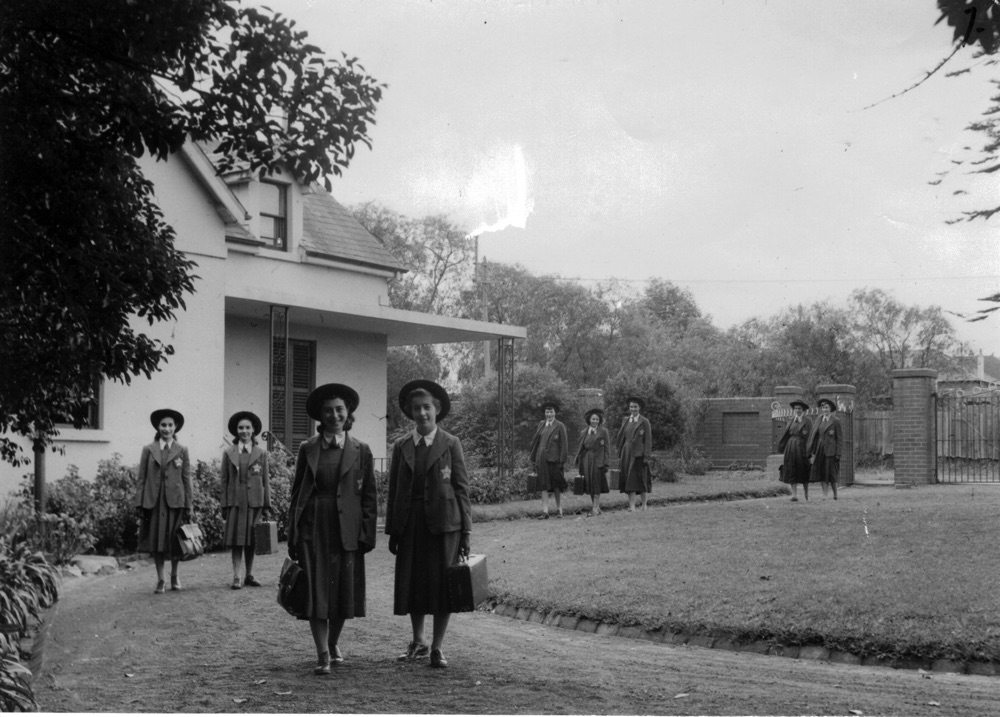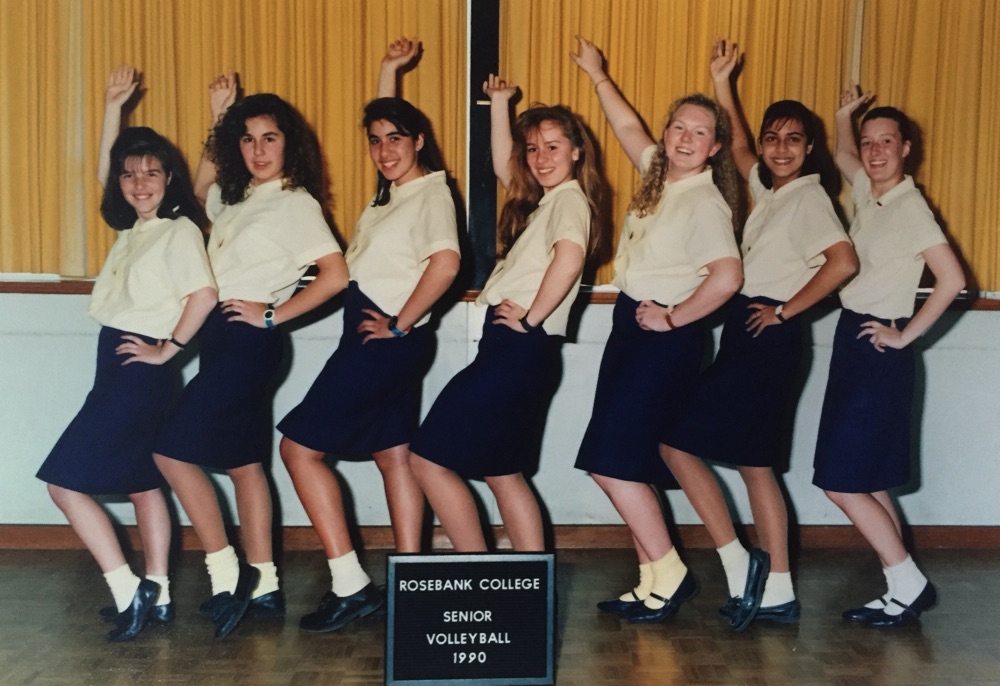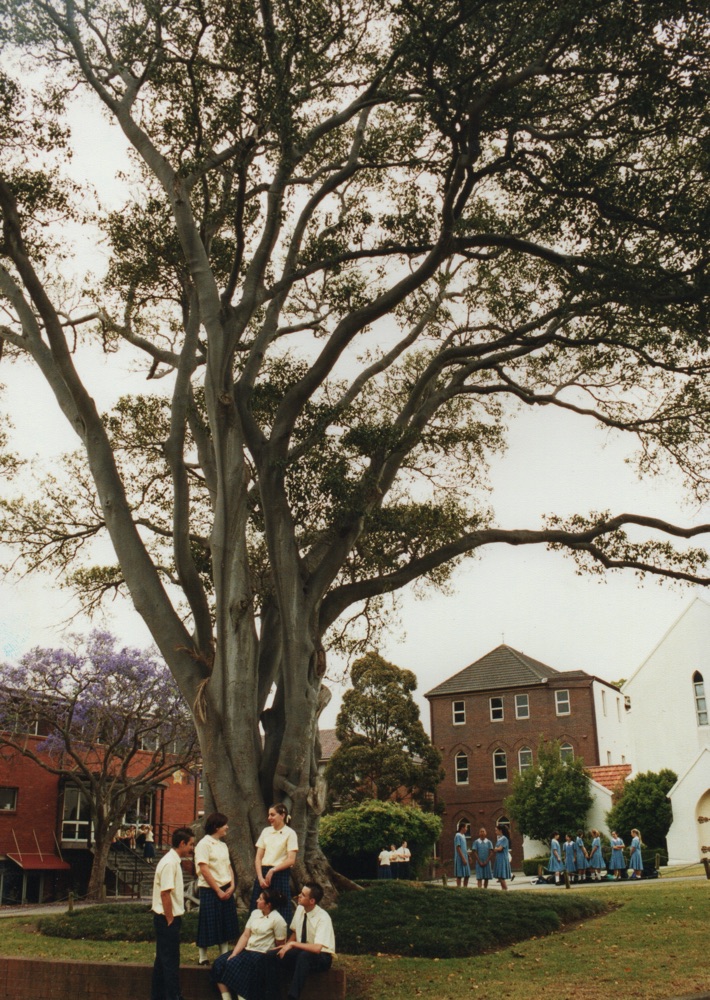Our History
The Rosebank story
Rosebank College has a rich history. Situated on the lands of the Wangal People of the Eora nation, from the 1830s it was known as Rosebank Estate until it was bought at auction in 1868 by Archbishop Polding to serve the Sisters’ growing community. The name is taken from the beautiful hedge of roses which circled the property.
Rosebank Archives
Rosebank College’s Archives are currently open for visitors to view the collection by appointment only.
The College Crest
Rosebank’s current crest, officially in use throughout the College from 2009, symbolises the College’s spiritual and cultural history as well as its future as a forward looking co-educational Catholic school.
The elements of the crest have been drawn from heraldic tradition and from Rosebank’s Catholic heritage as a proud place of Good Samaritan learning. Several of the symbols used in Rosebank’s crest may also be found on the crests of our sister schools.
A traditional shield has been used as the basis for the College crest. In heraldic tradition this dignified and classic shape provides the structure on which other symbolic elements are arranged.
The College’s colours of gold and blue have been used once more in this new crest. Gold symbolises understanding and generosity, which are two values closely related to the Benedictine concepts of ‘listening with the ear of the heart’ and hospitality. The colour blue traditionally represents strength and loyalty - qualities which we seek to nurture in our students. Similarly, the use of stripes in the heraldic tradition represents fortitude. This design element has also been used in the College’s new student uniform.
The open book on the shield represents both the Bible and the concept of learning as central to life. The five points of the Rosebank star represent the values of courtesy, humility, friendship, hard work and obedience to God. The word PAX, or peace, is included as a reminder of Christ’s challenge to us. In the Gospels, Jesus reminds us that Peace is not a passive state but a life-long active search for justice and so ‘Blessed are the peace makers’.
The sword across the book has many meanings. In the original crest, this was referred to as a distaff, symbolising diligence and work. In the Middle Ages, the sword was often used as a symbol of the word of God. The sword is an emblem of military honour and also is symbolic of liberty and strength.
Finally, the olive branches at the base of the shield are traditional Christian symbols of freedom, peace, hope, forgiveness and security.
In its entirety, the Rosebank crest represents the College’s historical traditions and the aspirations it has for the future of its students.
The Good Samaritan Sisters acquire the estate of Rosebank. There was a primary school on the property which the Sisters ran for local residents, and the Rosebank chapel served many families in the neighbourhood.
Rosebank becomes a Catholic Boarding School for girls. Its chaplain, Father John Dwyer OSB, donated 2,000 pounds after his death. This, along with other donations are used to build the present three-storey structure in 1886.
Rosebank assumes the name of a College. The memoirs from this time until 1911 testify to the great reputation the School enjoyed throughout New South Wales and beyond as a place of broad education. In Rosebank’s early years, the students come to the attention of the wider community. Marcella Kenny was the first female from a Catholic College to pass the University of Oxford Junior Examination in 1880 - the very first year that this particular examination was opened to girls.
The College closes to serve as a Juniorate for five years, while still retaining registration as a Secondary School.
Rosebank re-opens as a boarding and day College, offering academic, cultural and vocational subjects. Gradually, Rosebank develops into a Leaving Certificate School until 1966, when, in the process of regionalisation in Sydney and the phasing in of the Wyndham Scheme, it reverts to a Form 4 School.

The boarding school closes but the day school continues to expand, adapting to new demands in education and adding to its facilities.
The first lay Principal of the College, Mr John Hawley, is appointed.
The College returns to being a full secondary school with the introduction of co-education in Years 11 and 12.
The Sisters of the Good Samaritan establish Rosebank College as an Incorporated Body and appoint a Board to be responsible for the College. Mr Frank Hayes is the first Chairperson of the Board.

The second lay Principal, Mr Alan Moran, is appointed.

The third lay Principal, Mr Tom Galea, is appointed.
The College celebrates 140 years of education.
Co-education is extended to welcome boys into Year 7. This coincides with the introduction of a new school uniform, brand identity and student leadership structure.
The College celebrates 145 years of Catholic Education and our first year of full co-education.
The International Benedictine Short Stay Student Exchange Program (now called Benedictine Exchange Program (BEP) is introduced, giving students a four-to-five-week international learning and cultural experience in over 15 schools around the world.
The College names, Blesses and officially opens three new and renovated buildings; Ottilien Hall, Montserrat Hall and Jamberoo Hall. The new buildings include an auditorium, 18 learning spaces, five Science labs, Music, Dance and Drama spaces, a performance room, an undercroft play area and cafeteria.
Vertical Home Room structure is introduced, including Middle School and Senior School Divisions. Students from Years 7 - 9 share a common Home Room, as do students in Years 10 - 12.
Rosebank College marks 150 years with year-round celebrations for its Sesquicentenary, with 16 months of festivities until April 2018, culminating with the final event. The project initiatives include advertising with the 150th logo, special gifts and merchandise, an Open Day with a heavy focus on archives, Gala Dinner and more.

The last of the Sesquicentenary events is a plaque unveiling on April 10 acknowledging the original site of Rosebank College at Albina Villa in 1867. The City of Canada Bay hosted the event where Rosebank students, staff, Council VIP and staff, and neighbours gathered in prayer and blessing.
Two new Houses, Adamson and Hayes, are introduced to the Rosebank community. Rosebank also welcomes delegates from around the world for the annual BENet conference.
In this most unusual year, Rosebank College is able to move our community to at-home online learning safely, quickly and smoothly during the worldwide pandemic. Rosebank’s principal of 16 years, Mr Tom Galea, announces his retirement.
The first female lay principal, Ms Iris Nastasi, is appointed and the College experiences a period of disruption and remote learning even more restrictive than the previous year as the COVID-19 pandemic moves into its second and third years. The community remains strong by connecting through virtual learning and communications.
